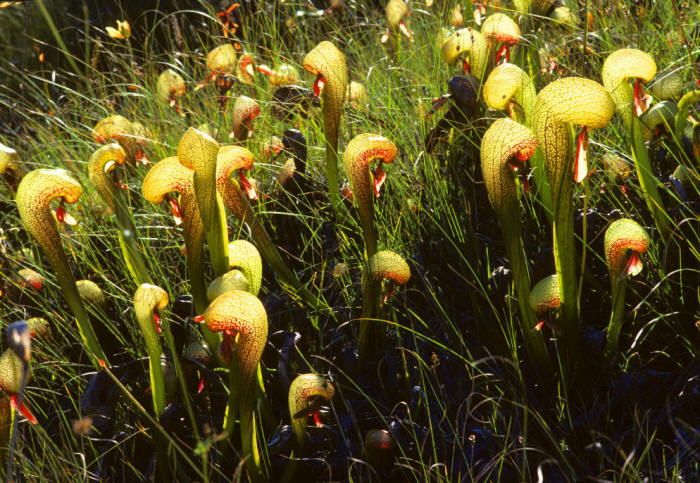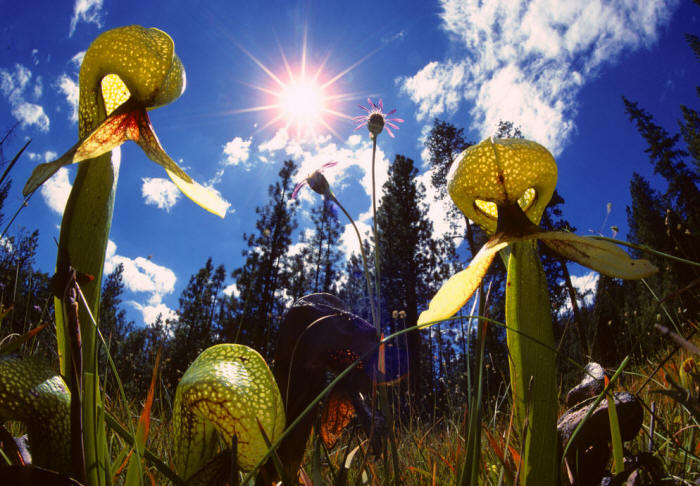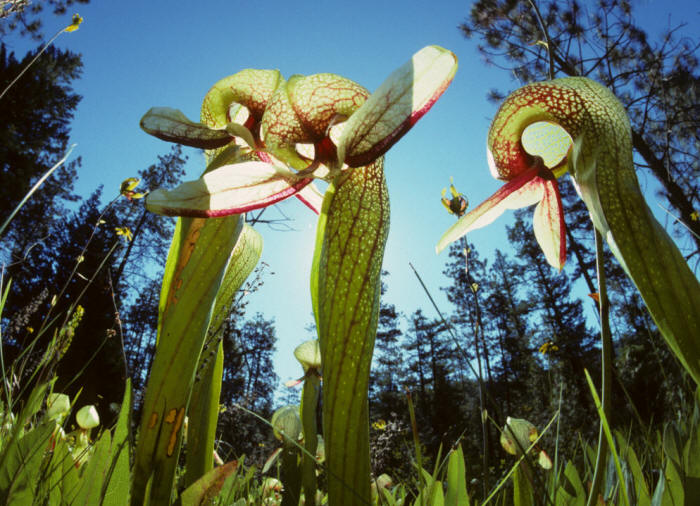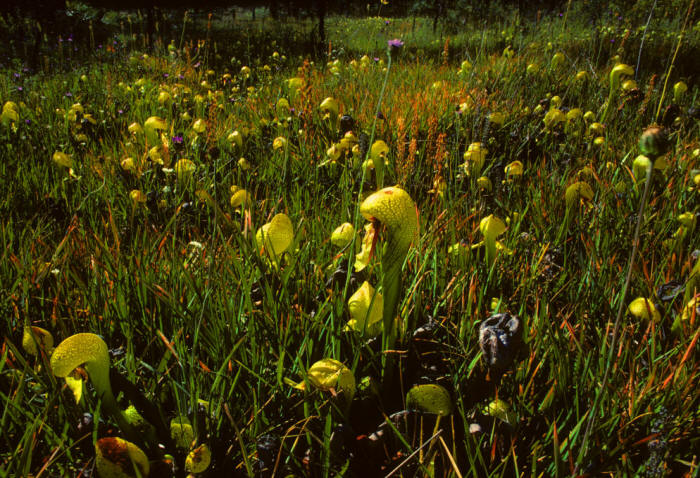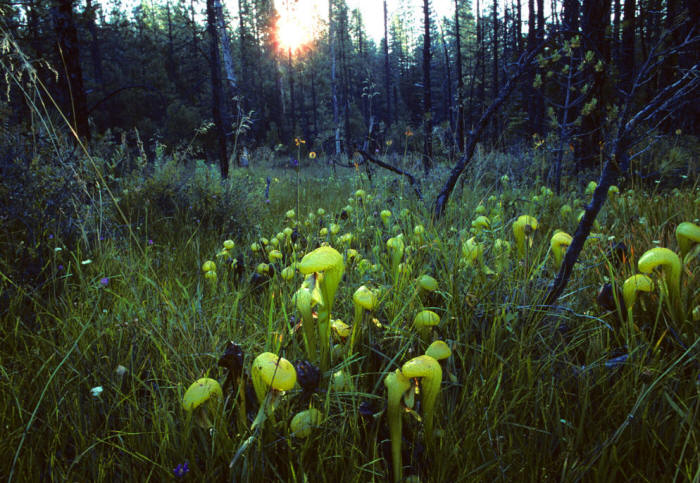|
Carnivorous Plants Story
|
||
|
|
IDarlingtonia californica Colorful creations of Nature. The upper portion of the pitcher assumes a light green to yellow color in the plants well exposed to the sun. A fishtail-appendage and the area near the pitcher orifice get bright red due to heavy venation. In an idea condition as in this photograph where the plants receive full sunlight, the large pitcher leaves grow 40-60 cm tall on average. As is true in general with other plants, the cobra plant populations growing in a less ideal, low-light condition in nature tend to produce a taller pitcher, sometimes reaching 100 cm, but with less attractive expression, and probably with less crop of prey.
High noon on a hot summer day in northern California. It is not unusual for the daytime air temperature to reach 35 C in summer but the running water Darlintina's root is submerged in rarely exceeds 25 C on the same day. The cobra dome assumes a tough, copper tint toward the summer.
Oregon, early-July, new leaves ready to trap. In
the height of a trapping season.... in early July, southern Oregon. Twisted
pitcher leaves exhibits colorful venation .
Darlingtonia bog in September, in northern California. The filed appears almost flat in first sight, but the mild stream around the cobra plant root carrys cold water....
Surrounded by dense forest of pine trees, an open patch with wet surface creates good habitat for a cobra plant colony. The early morning sun penetrates through a moist summer air in light fog in northern California.
Introduction Venus Flytrap Sundews Pitcher Plants Cobra Plant Butterworts Bladderworts
|
|
